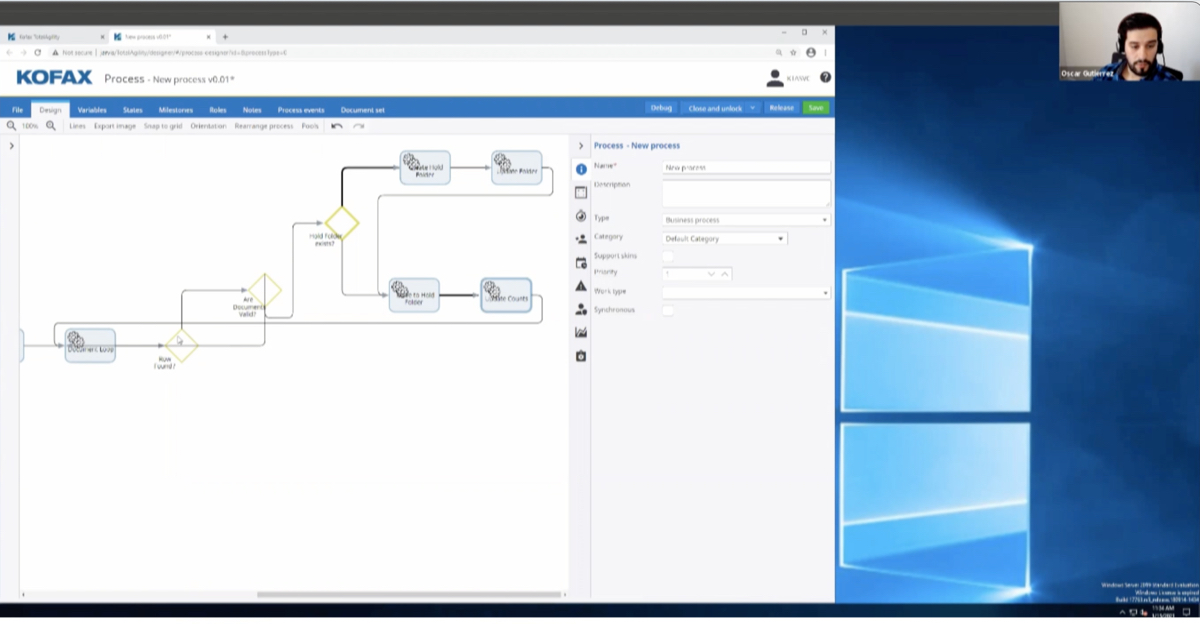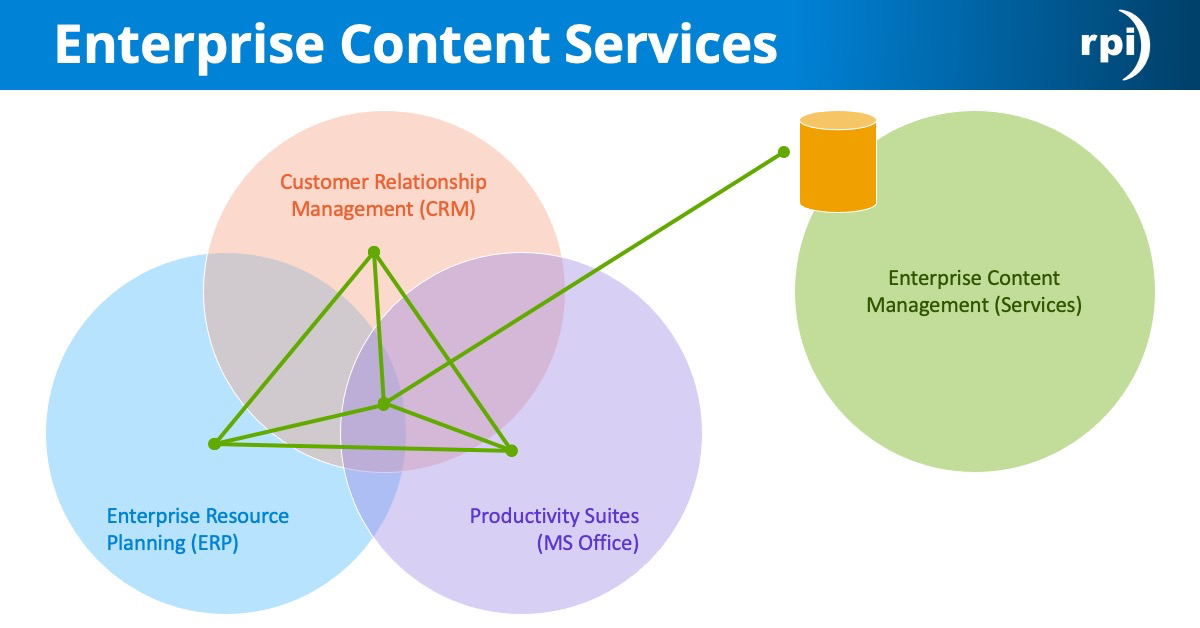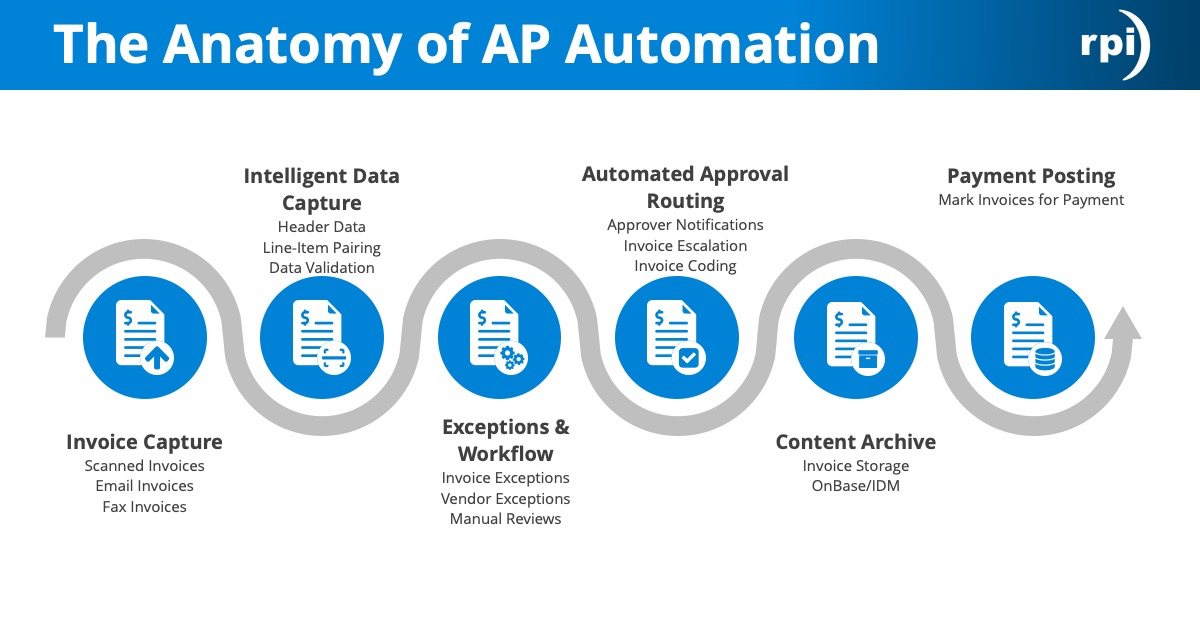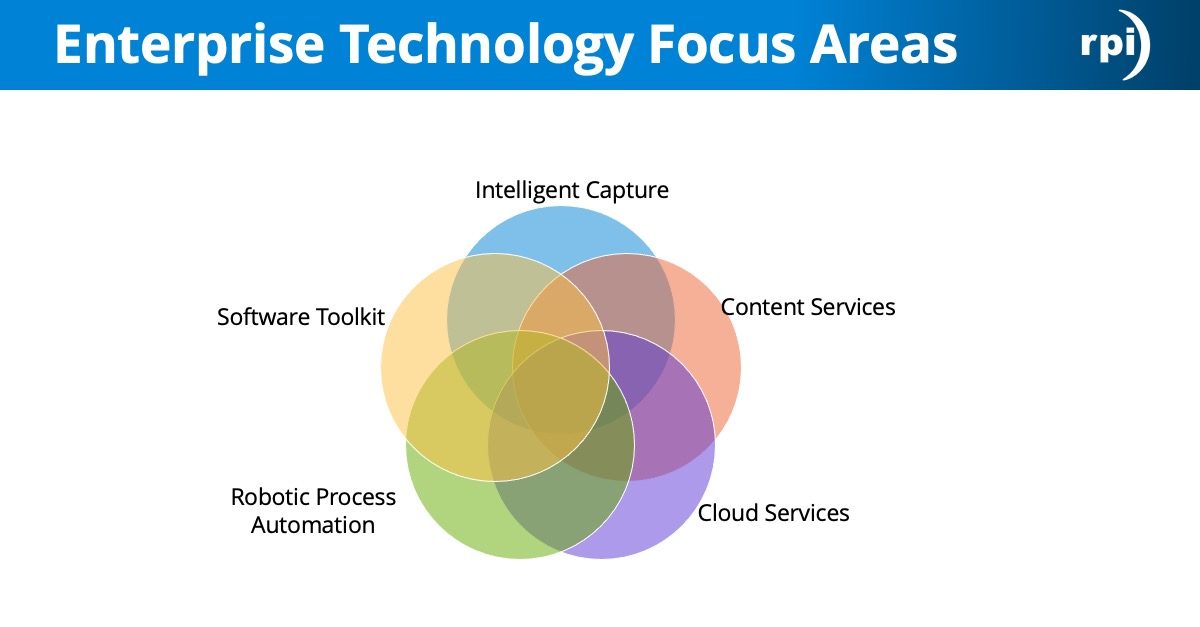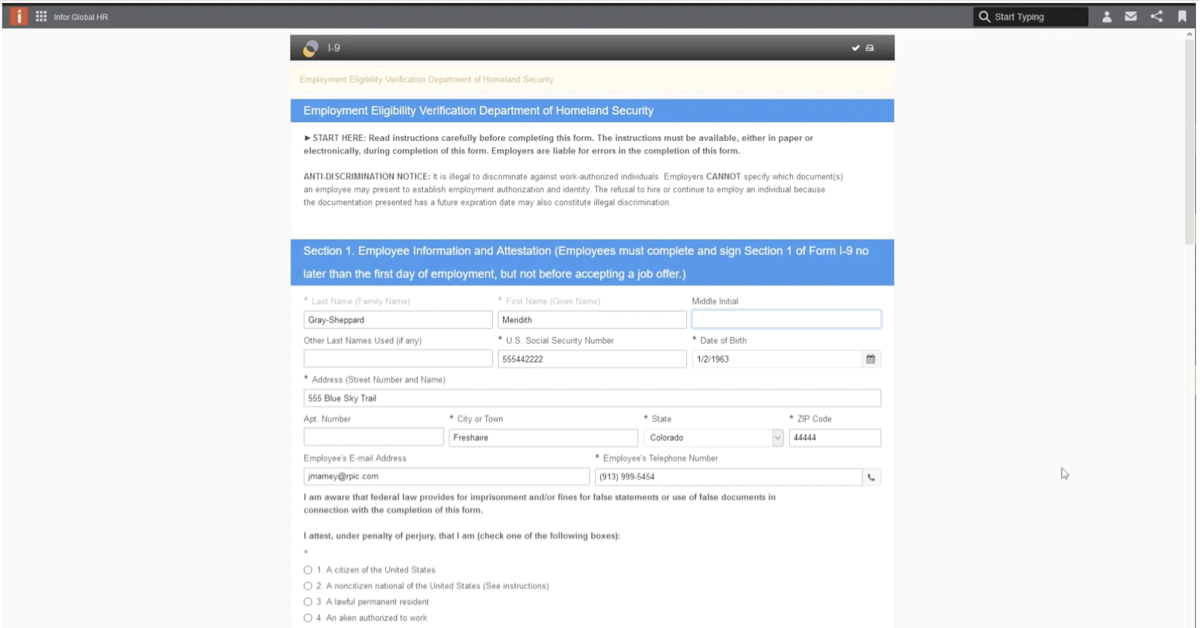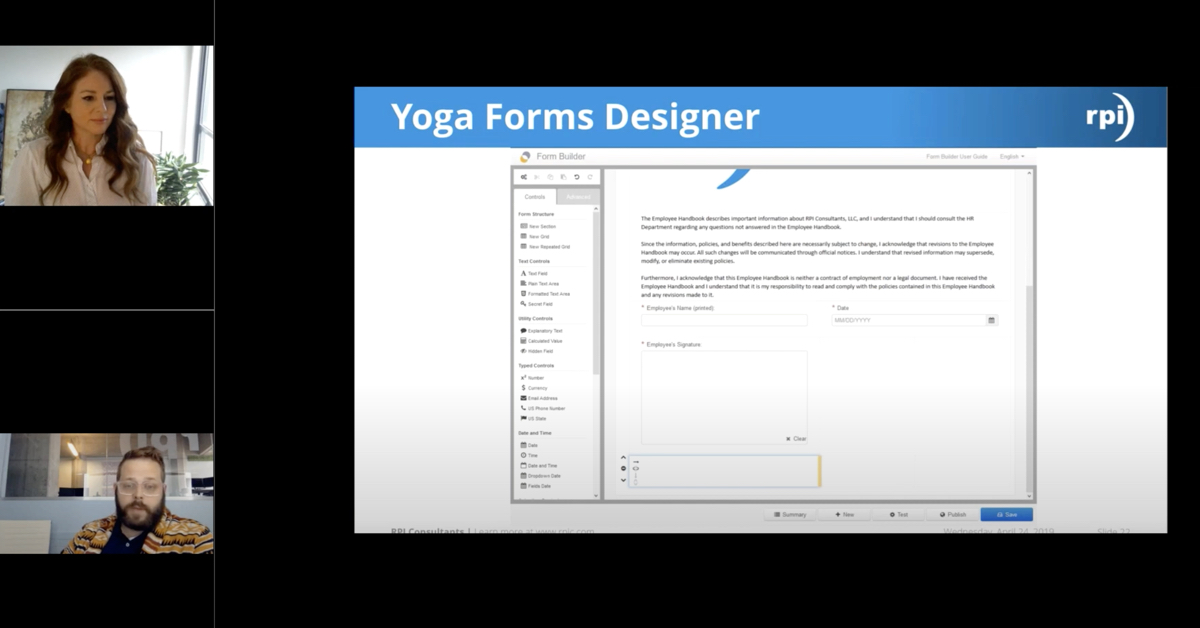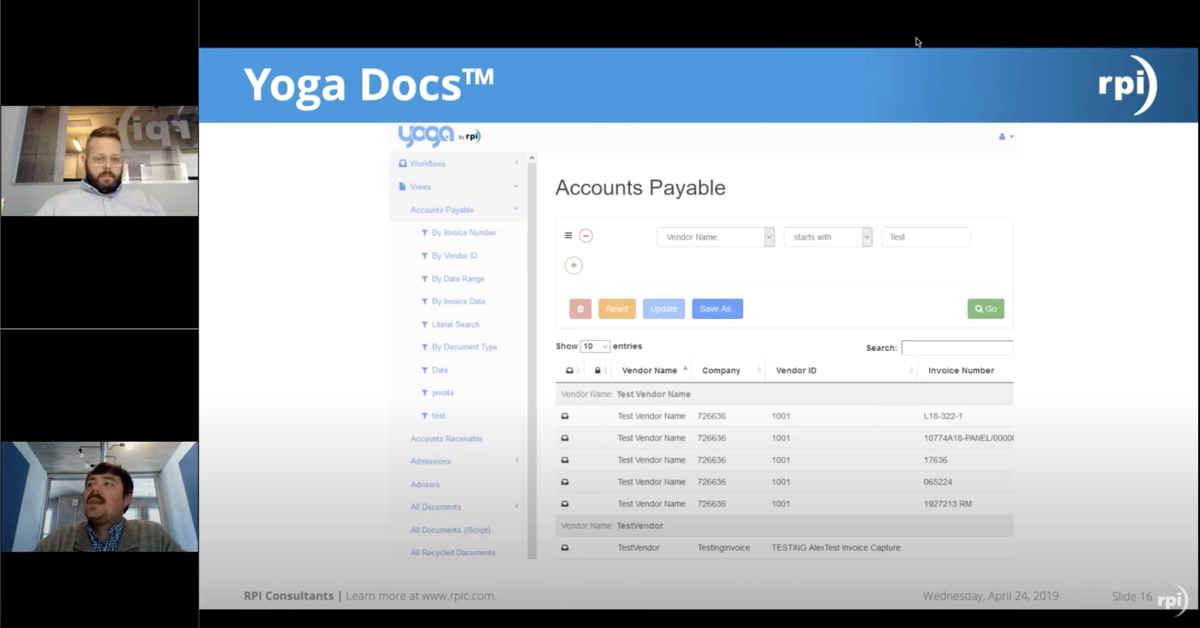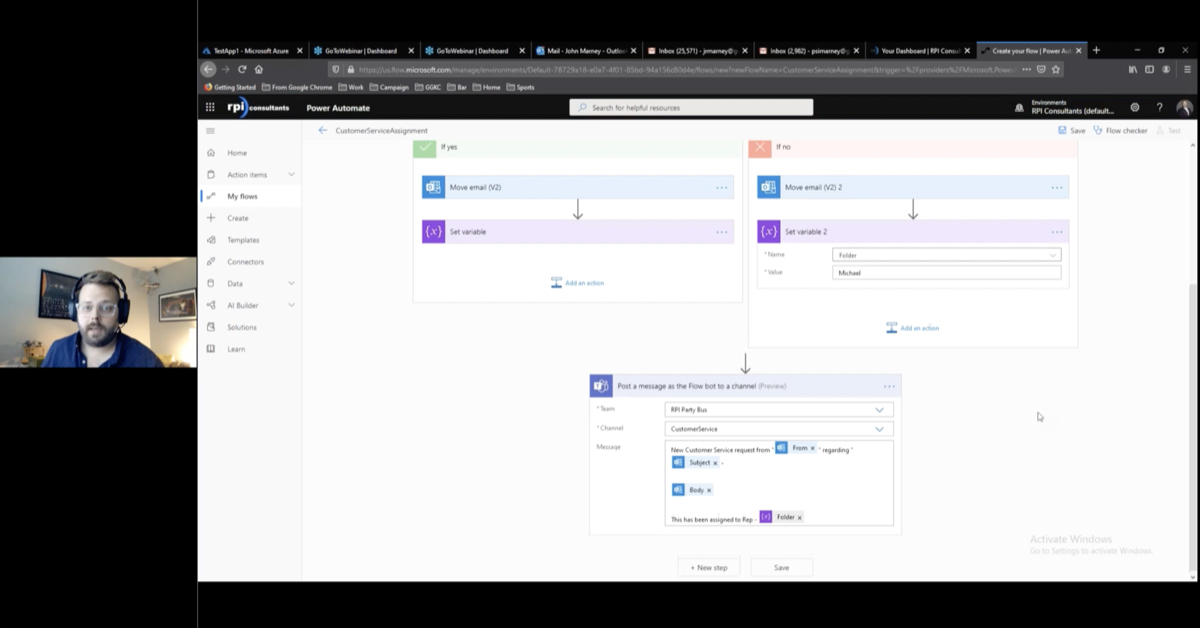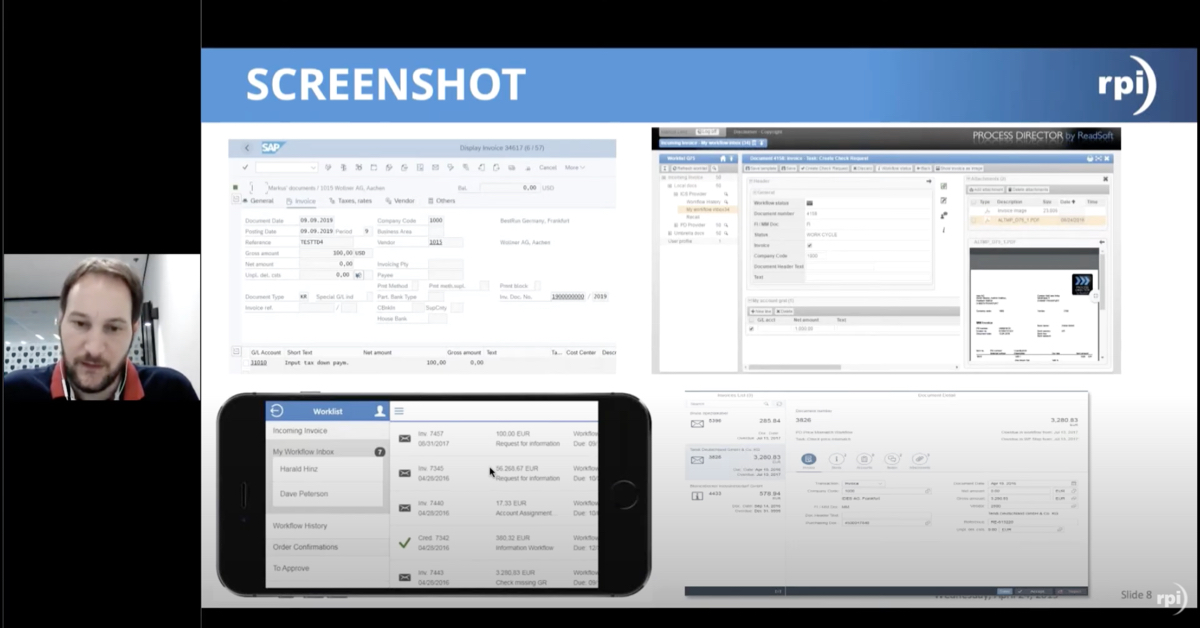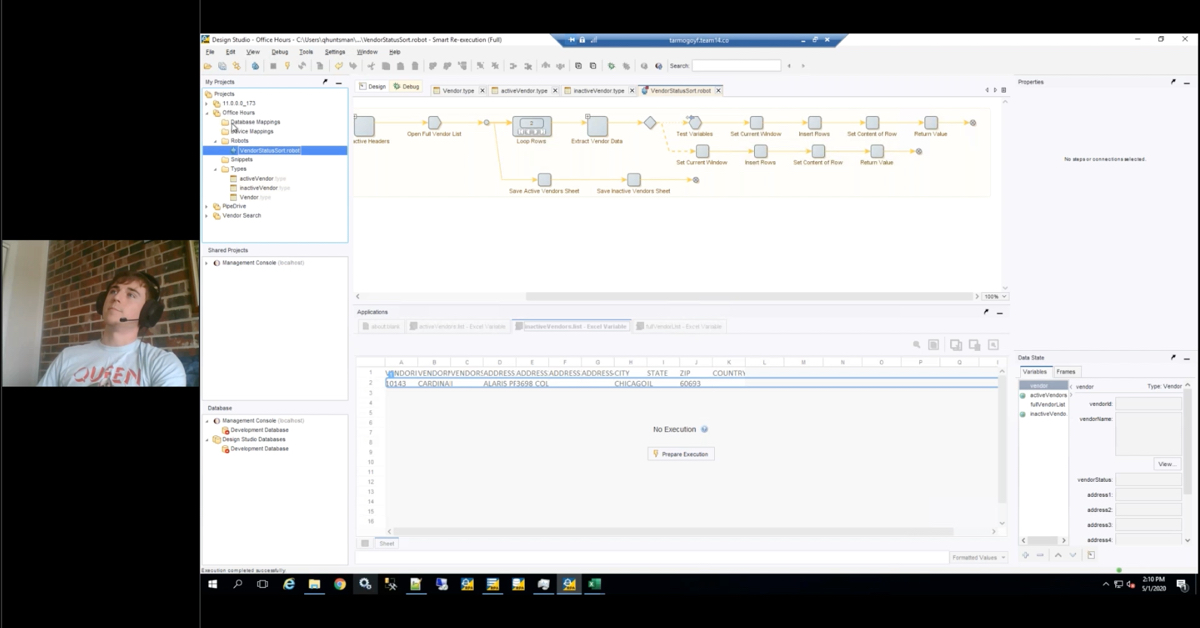Speaker 1:
Here we have our, To Cloud or Not to Cloud webinars. So without further ado, I’d like to present Mr. Richard Stout and Mr. Keith Wayland.
Mr. Richard Stout:
Right.
Mr. Keith Wayland:
Thank you.
Mr. Richard Stout:
Thank you. To cloud or not to cloud?
Mr. Keith Wayland:
That is the question.
Mr. Richard Stout:
That is the question. Or some might ask to Cloud now…
Mr. Keith Wayland:
or later?
Mr. Richard Stout:
Or later?
Mr. Keith Wayland:
There you go.
Mr. Richard Stout:
So that’s what we’ll be addressing in today’s penultimate webinar of our first week of the 2018 winter webinar series. We are RPI consultants. We are a dedicated team. We have expertise across all functional areas of Infor CloudSuite Financials and Supply Management. And Infor CloudSuite HCM and we have a really strong technology practice.
Mr. Keith Wayland:
So our agenda for today, we’re going to talk about what some of the drivers are for the increasing trend of folks migrating to the Cloud. And also what some of the barriers are. We’re going to talk about how the roles of the vendor and customer shift a little bit when you do this cloud migration. We’re going to talk about some of the differences in integrating with a multi-tenant environment versus an on-premise solution. And we’re going to talk about the overall direction of Cloud and ultimately answer whether it’s nobler in the mind to SAS, to slinging your hours on a multi-tenant or to take arms with on-premise solutions and by doing so to license perpetually.
Mr. Richard Stout:
Unseen.
Mr. Keith Wayland:
So a one quick thing here, is that for purposes of today’s presentation, we are talking specifically about Infor CloudSuite and we mean Infor CloudSuite ACM and Infor CloudSuite FSM.
Mr. Richard Stout:
Right.
Mr. Keith Wayland:
We also refer to often as version 11, the next generation of Lawson Software and CloudSuite. It turns out can be replayed in many ways, including on-premise in case you didn’t know. And here we’re looking at the pros and cons of moving to CloudSuite in a multi-tenant environment, which we will dive into. So with that, I will ask my colleague here, Mr. Stout, why do people look at moving to the Cloud?
Mr. Richard Stout:
Why do people look at moving to the cloud? Well, there are a number of good reasons. I think the number one reason is to minimize the responsibility and cost of running a lot of servers on premise, right? And that’s only becoming more and more of a reason as software becomes more complex and requires a wider variety of resources to deliver, right? I mean, think about, moving from Lawson nine to Lawson 10, a lot of customers doubled or even tripled the number of servers that make up their Lawson environments, full CloudSuite solution can take even more. And our clients have had a lot of experience, maintain those systems and gone through a lot of updates that, technology driven updates, hardware that needs to be replaced, operating systems that need to be upgraded. And they’ve put a lot of time and effort into keeping software current safe, highly available disaster recovery systems and fault tolerant and keeping those systems secure. And we have a lot of clients to understand that there are other ways that they could use their time and resources that might be more beneficial to their organization rather than…
Mr. Keith Wayland:
Disaster recovery is often a conversation that we have with our customers. And some are very forward-thinking, but spent a lot of money and effort in truly accomplishing that. And sometimes IT security comes from sort of broader up the loss of enforced system gets swept in. So let me ask you this, if there’s all these drivers to the Cloud, why isn’t everybody already on the Cloud?
Mr. Richard Stout:
That’s a great question. Well, historically, there’ve been a few different factors that have slowed Cloud adoption, and I think the number one reason is probably control over the application, right? When you have a software running on prem, you control when it gets updated and how it gets updated. You can connect to all different layers and you own those servers, you own the database, you have full control over the data. There’s maybe some insecurities about taking your organization’s data and trusting it within another company, will they keep it secure? Will they keep it private? Will they use it for leverage against you?
Mr. Keith Wayland:
Leverage For their own gain?
Mr. Richard Stout:
Yeah. I mean, there’re maybe some thoughts about that, that have held back our clients. Also we have clients that already have a large data center, are already very adept at maintaining all of these systems and they don’t see a big cost advantage in taking just one application out of that existing data center, or maybe a lot of customizations to a system have made it not a great fit for moving to a multi-tenant, which has more of a standard application delivery.
Mr. Keith Wayland:
So what does helping people overcome some of these barriers today, in your opinion?
Mr. Richard Stout:
Well, I think that one big reason is a huge step forward. An evolution in what cloud really means.
Mr. Keith Wayland:
Okay.
Mr. Richard Stout:
50 years ago, when we first started tossing around the term Cloud in the loss of marketplace, what it really meant was hosting, right? All it was, was the same server that you would be running on prem, running in somebody else’s data center. And it comes with all of the same challenges of running on-prem. It was just another company was offering managed services and paying for the hardware and operating system and database licenses. But today’s Cloud solutions don’t look anything like that at all. And if you look at the product offering from Amazon, AWS, it doesn’t look anything at all like what you get from installing Microsoft Windows server or red hat Linux on premise. I mean, there are a lot of different advantages and a lot of different tools that Infor has been able to leverage with their Clouds, the application that just wouldn’t be feasible to do on prem.
Mr. Keith Wayland:
So these are the market leaders today, and obviously we know that Infor leverages AWS, but they’re also in a position where if there are new innovators or disruptors to that market, they can lead her on hitch their wagon to that, right? One of, as Charles Phillips famously said, friends don’t let friends build data centers. And the fact that Infor is specializing in the infrastructure business, allows it to take advantage of whatever new developments are out there.
Mr. Richard Stout:
Absolutely.
Mr. Keith Wayland:
So let me ask you this, in today, I keep hearing about multi-tenant, what is so special and important about multi-tenant?
Mr. Richard Stout:
Well. At its heart. A multi-tenant software means that we have basically a single application that’s serving multiple clients, and each of those clients has their own siloed data, their own siloed configurations, but the overall application and servers that power that application are pooled or shared together. Now this offers a huge advantage, definitely to Infor, right?
Mr. Keith Wayland:
Definitely.
Mr. Richard Stout:
Because it’s significantly reduces their cost of delivery. And what does that mean? They can pass that savings on to clients that in both subscription costs. So we look at, what would be the cost of hosting and whole instance of CloudSuite for an individual customer that would be much greater than what clients pay with CloudSuite SAS licensing. As well as enforceability to just deliver a lot more for the money. Now, the other big advantage with multi-tenant of course, is having a single application version that all clients share.
Mr. Keith Wayland:
Just one of the big challenges for a loss of development over the years, that there are so many different iterations and versions and operating systems and module subsets that every time they try to issue something new, they can’t possibly mimic the thousand different variations in which it’s going to take a fat. And the more they can consolidate that footprint into a universal one, the more nimble they become in terms of developing the software and managing the changes innovations that come forward.
Mr. Richard Stout:
Absolutely. Hey, imagine going to a user group and knowing that everyone you interact with in that user group is running exactly the same version of application that you are and has the same set of components available to them, right?
Mr. Keith Wayland:
That means that my solution would work for you, right? That would be pretty amazing.
Mr. Richard Stout:
Exactly.
Mr. Keith Wayland:
So one of the things I hear about is there are some fundamental changes in terms of how you work within this shared environment? Can we talk about those a little bit?
Mr. Richard Stout:
You mentioned patches or system updates before and how challenging it’s been for Infor and Lawson before and for, to put out patches that work perfectly in every variation of on-premise systems with different operating systems, different databases, different sets of components, different versions of those components. Well, with multi-tenant, really a lot of that complexity goes away. And that means that Infor can move towards more of an industry standard model of rapidly rolling out updates to the application and performing automated testing on those updates prior to exposing them to customers. So in the multi-tenant Cloud, your application will be updated by, Infor on Infor schedule.
Mr. Keith Wayland:
That a loss of control we were talking about earlier.
Mr. Richard Stout:
Exactly. And that’s a big change and it’s a big change in mindset for people who are used to legacy on-prem software or legacy hosted software, sort of…
Mr. Keith Wayland:
Just like when they run my testing cycle.
Mr. Richard Stout:
Exactly. So in a multi-tenant Cloud, you don’t do a yearly cyclical update where everybody needs to stop and execute test scripts against a test system and find all those errors and regressions, and then try to resolve those and get a working patch set in tasks, and then trying to play that to prod. Prudentially, we don’t have that need for that time invest in anymore. The system will be updated. It’s approximately monthly. The updates are generally small, incremental updates, Infor still puts out, release notes and they hold a WebEx to discuss what’s happening? What’s going on? And clients can opt to have what’s called a pre-prod environment, which is a test environment that gets updated in advance of the prod environment. And you get maybe about a week’s notice, which grant isn’t enough time for heavy testing, but that’s not the point, right? It’s just to get some exposure to some of these new things before they come out in the live environment.
Mr. Keith Wayland:
The big advantage is you’re always current.
Mr. Richard Stout:
Totally. I think we’ve all run into an issue where it’s like, we have a small problem in the system and Infor’s recommended solution is do a big update to fix it.
Mr. Keith Wayland:
That’s probably cause we let it slide behind a little bit, cause it was such a big deal to get there. So that’s really nice. The other thing I hear about is, there are still some significant customer responsibilities when you move to CloudSuite. Maybe there’re some misconceptions there that we can clear up.
Mr. Richard Stout:
Totally. I think the biggest misconception is that applications in the cloud administer themselves.
Mr. Keith Wayland:
Wouldn’t that be nice?
Mr. Richard Stout:
Would that be nice? Right. The reality is that there is still a real need for an application administrator role. So IT plays a big part in keeping our Cloud and multi-tenant delivered SAS application, best position for our business users to get value out of it. Some big customer responsibilities I want to highlight are first off user provisioning and access, right? So IT is still responsible for who has logins to the system? And what do those logins grant in terms of privileges across the application? Of course, customers also take responsibility for any workflows or extensions they’ve added in to the application. So we’re talking about IPA flows, things we’ve done in configuration console, ion workflows, anything like that. And then our application administrator, would be traditionally our first line of and user support.
Mr. Richard Stout:
So answering how to questions or helping to triage issues, maybe opening Infor extreme tickets. And then finally, CloudSuite is typically sold within overall data area size of about two terabytes. And it’s a client responsibility to ensure that the application, either falls within that size, perhaps by periodically pruning out or purging old data or attempt data or, potentially purchasing additional size. If they take a big advantage out of Infor document management or something like that, that brought a lot of data in the CloudSuite.
Mr. Richard Stout:
So I know I promised.
Mr. Keith Wayland:
You promised people screenshots.
Mr. Richard Stout:
No screenshots, but I had to slip in one. And this is a Cloud administration console. There’s a bunch of things that we can do in here. This is a part of CloudSuite financials that we’re looking at. I have the administrator role, so I can go to the administration console. And through here, some of the things we can do is, we can configure our replication sets. We can access import DB export DB. And the screen we’re looking at right now is where we set up our SFTP server credentials. So when we need to move data in and out of CloudSuite, this is sort of the other end of that link.
Speaker 1:
So one of the things that I’ve heard about a lot is that it’s very different in grading with a multi-tenant environment than it is on prem. Maybe we could talk a little bit about that.
Mr. Richard Stout:
Totally. So CloudSuite comes with a whole bunch of new modern ways to integrate with other applications and other systems. So landmark just as a platform offers a standard web services interface over top of every business class. So we can use either rest or soap standards web services to call into, pull data out of a business class, add data and update data. Basically call any method or basically execute business logic, through the application. Replicating, what we might do as an end-user or through something like spreadsheet designer. Now we’ve got a new feature here to package those individual web services into a custom API that would be for a specific application and that’s called the Infor ion gateway API. So our eye on gateway API allows us to pick some individual entry points or a web services that we want to expose to an external system, put those together with a standard authentication mechanism.
Mr. Richard Stout:
So we can group them and put, say a standard authentication interface over top. And using these industry standards, it makes work easier to connect with other SAS systems or their Cloud-Based systems were on premise or legacy software. And then of course, we’ve talking about IPS for a long time as an interface tool, right? And Infor process automation IPI, the same IPA that a lot of clients have in their Lawson environment today, that’s integral to CloudSuite and it still makes a pretty great interface engine. Now, the elephant in the room here of course, is that in a multi-tenant environment, customers don’t get direct database access to the transactional database.
Mr. Keith Wayland:
I love my ODBC.
Mr. Richard Stout:
Well. Unfortunately, those times have passed and I would make a case that even if this access were available, I don’t think it’s the best way to integrate with an application because the database is subject to change, right? The scheme of the tables, that’s something that’s set by the application developer by Infor, or by the platform. And having an integration at that layer exposes you to potential changes in the database schema that could break an integration where when we work through vendor supported APIs, and we don’t have that [inaudible 00:19:05]. The other big problem with database access is security, right? It totally undercuts our security layer that we put in front and with cloud-based application security is super important.
Mr. Richard Stout:
If we grant access to the database, even if we’re selective about which particular tables, a user account can access, it’s a totally different security model. It’s not connected with the security model that we have for the rest of the application. And finally, if we look at say global HR, I mean, customers have global HR on-prem today, understand that because we have data at rest encryption, the social security number field and in the employee table holds encrypted data. Even today, it’s impossible to query a global HR database and pull out social security numbers. We have to go through the application layer to access that. And I think that’s a good thing.
Mr. Keith Wayland:
So what you’re saying is, even though they won’t play music videos on music television anymore, that’s good for me?
Mr. Richard Stout:
Yeah.
Mr. Keith Wayland:
Okay. I’m buying it.
Mr. Richard Stout:
That’s exactly right. Dude, I’m buying you a Spotify subscription for Christmas. So let’s dig a little bit more into that. How do we access data through the application layer? Well, similar to in the past, we had DME queries and an ice queries, here on the new platform, we’ve got our spreadsheet desire, we’ve got landmark queries. This is really the heart of the way that we interact with data. And we can pass that through our web services layer and then pass that through our Infor ion gateway API layer. One great advantage to this, is that anything we’ve done to extend the application is sort of just built right in to how we see the application through the API. So talking about adding new fields or adding user fields, or even all new business classes, they become intrinsic to the overall application and we can query those out the same way we query Infor delivered.
Mr. Keith Wayland:
Right. So it’s not like if I add a custom table or some custom fields to a table, and then I have to use a design studio to be able to see it on any form. I want to see it. And I have to find other ways to query it because not the default schema for the XL addons and so forth. It’s just kind of gets itself.
Mr. Richard Stout:
They are just there. Exactly. Now, I mean, it can be challenging having to work through the built-in relations from business class to business class. We don’t have quite as much flexibility as what Sequel developer might be used to just writing their own joints. But on the flip side, we know the relations built into the application are correct.
Mr. Keith Wayland:
Right.
Mr. Richard Stout:
And they’re predictable and they’re going to give us the raw results we expect where when we need to write our own joints, there’s risk that we could end up having joined that in some cases breaks down and gives us the wrong result.
Mr. Keith Wayland:
Right. Just like when we want to join AP payment and AP district without using AP invoice in the middle.
Mr. Richard Stout:
Oh yeah [crosstalk 00:22:24]. That’s a Cartesian joint Fox stay away from that. So some of our clients have enterprise data warehouse that powers their interface strategy and that’s great. CloudSuite is able to play well in that environment. So we’ve been using replication sets as a way to push data out of CloudSuite. And the way that works is you would go set up what business class, you want to direct your application set towards. You can bring in as many fields as you need, including fields from related business classes, you can set up a schedule. The replication set can either push out a full file or just adds changes and deletes since the last time it synced up that data comes out in either CSV or JSON format and is transferred over SFTP. So it’s pretty straightforward to integrate CloudSuite into an ETL process that keeps up on-prem or maybe other cloud-based non-inferior data warehouse up to date. But for clients that don’t use the data warehouse today, it’s certainly not something where I’m saying you should do as part of CloudSuite. But [crosstalk 00:23:43].
Mr. Keith Wayland:
So for my friends out there, like me that understand all the acronyms. I can summarize at a high level that if you have a data warehouse today, you can keep using it. It’s easy to populate, but you’re not going to need one just because you’re moving to the CloudSuite. Is that a fair?
Mr. Richard Stout:
Totally.
Mr. Keith Wayland:
Okay. There you go.
Mr. Richard Stout:
Okay.
Mr. Keith Wayland:
Hey, so I noticed the deeper we get into this cloud presentation, the further away we’ve gotten from the Shakespeare motif.
Mr. Richard Stout:
Well, let’s wrap it up by talking about what’s coming next. And I think Infor has shown that they are very receptive to innovations in technology and things that are out there, things that Amazon is making available through AWS, that maybe seem a little nebulous or how could these fit in a practical scenario? Infor is making a practical application out of machine marrying, voice recognition, internet of things, and really wrapping those into practical business applications. And I think the best example of that is Coleman today.
Mr. Keith Wayland:
Okay.
Mr. Richard Stout:
And…
Mr. Keith Wayland:
So if you’re going to deploy Coleman today, you’re obviously not going to do that on premise. You would need some crazy supercomputer to do that, right?
Mr. Richard Stout:
Probably, it’s just impossible. And even if your clouds who is on prem, the voice recognition part, the natural language processing part would be relying on Amazon Alexa API.
Mr. Keith Wayland:
I would also add that an observation that we’ve made across our clients over the last couple years is that the new functionality always comes out first in multi-tenant environments. And sometimes we find that, our prem clients might be waiting a little bit for these things to come out a few months later, those they’re going to get priority. They’re the Apple of in foresight with good reason.
Mr. Richard Stout:
Absolutely. So with that, I think we’ll really take a few questions.
Mr. Keith Wayland:
Awesome.
Speaker 4:
We have a question.
Mr. Richard Stout:
Hit me.
Speaker 4:
If it is a single instance of the software, how does one apply configurations and customizations?
Mr. Richard Stout:
So configuration console is your entry point there. And anything you do with configuration console is specific to your tenant, and you could think of it as overlaying the Infor delivered code. So everybody runs the same set of Infor delivered code, but each tenant has its own configuration layer. What that means in a practical sense is, the business classes are defined by Infor, but modified by your configuration and runtime.
Speaker 4:
So I have a question for that. And by extension from that last comment, do personal configurations, you could still do that in a multi-tenant environment?
Mr. Keith Wayland:
Absolutely.
Mr. Richard Stout:
Personalization still work pretty much the same way.










